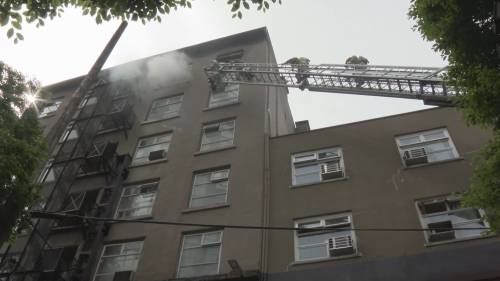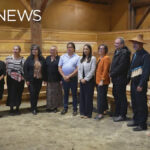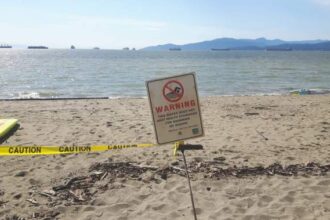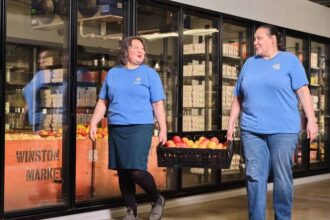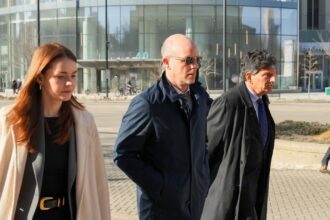A devastating blaze tore through a single-room occupancy building on Vancouver’s Granville Street early Tuesday morning, forcing dozens of vulnerable residents into the streets and highlighting the precarious housing situation facing the city’s most marginalized populations.
The fire, which broke out shortly after 3 a.m. at the three-story SRO in the 1000 block of Granville Street, prompted a large-scale emergency response with over 40 firefighters battling the flames that were visible from several blocks away. Thick plumes of smoke billowed into the night sky as residents—many still in their nightclothes—huddled together on sidewalks across from the burning building.
“I grabbed what I could and ran,” said Marcus Collins, a 54-year-old resident who has lived in the building for three years. “The alarm went off and within minutes, smoke was everywhere. Some people didn’t even have time to put on shoes.”
According to Vancouver Fire Rescue Services, approximately 65 residents have been displaced by the fire, with no serious injuries reported—a fact officials are calling “miraculous” given the building’s age and the speed with which the fire spread. Two residents were treated for smoke inhalation at the scene, while one was transported to hospital for further assessment.
The affected SRO is one of nearly 150 such buildings in Vancouver that provide essential housing for those living on low incomes or at risk of homelessness. These structures, many dating back to the early 20th century, often lack modern fire safety systems despite housing some of the city’s most vulnerable residents.
“This isn’t just about one building burning,” explained housing advocate Eleanor Thompson from the Downtown Eastside Housing Coalition. “It’s about the chronic underinvestment in safe, affordable housing for our most vulnerable neighbors. When these buildings burn, residents often have nowhere else to go.”
The City of Vancouver has activated its emergency response protocol, with representatives from BC Housing and the Red Cross establishing a temporary shelter at a nearby community center. However, finding permanent housing solutions for the displaced residents presents a significant challenge in Vancouver’s tight housing market.
“We’re working to ensure everyone has a safe place to sleep tonight,” said Councillor Sarah Martinez, who arrived at the scene at dawn. “But the reality is that our emergency housing system is already stretched to its limits. This fire compounds an already critical situation.”
Fire investigators remain on scene working to determine the cause of the blaze, though preliminary reports suggest it may have originated on the second floor. The building, constructed in 1912, had passed its most recent fire inspection but had been cited for several minor violations in the past year according to city records.
This incident occurs against the backdrop of Vancouver’s ongoing housing crisis, where the vacancy rate for affordable units hovers below 1% and the average one-bedroom apartment rents for over $2,500 monthly. For residents of SROs, many of whom survive on disability payments or social assistance, finding alternative housing in the current market is nearly impossible without significant support.
The provincial government recently announced a $500 million investment in affordable housing initiatives across British Columbia, but critics argue the funding falls far short of addressing the scale of need, particularly for those at the lowest income levels who rely on SROs as housing of last resort.
As emergency crews continue their work and displaced residents face an uncertain future, this fire raises critical questions about the state of Vancouver’s aging SRO stock. How many more vulnerable residents must face displacement before meaningful investments are made in safe, affordable housing for those most in need?

